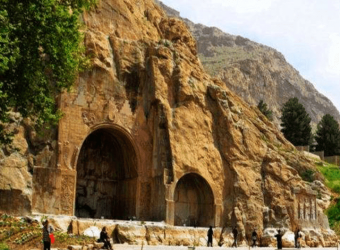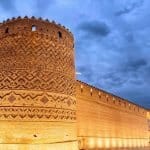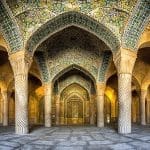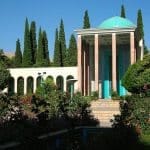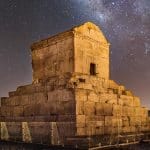Bisotun (Behistun) lies in western Iran, in the foothills of the Zagros Mountains near the city of Kermanshah. It is far more than a single monument — it is a rich tapestry of human history, art, legend, and landscape spanning thousands of years. In 2006, UNESCO recognized Bisotun for its outstanding cultural value, acknowledging its contributions to writing, monumental art, and the ways civilizations have interacted in this corner of the ancient world.
At its heart is the great Behistun Inscription, carved into a cliff by Darius the Great around 521 BC. This monumental relief and its accompanying trilingual cuneiform text (Old Persian, Elamite, and Babylonian) recount how Darius restored his rule over Persia. It holds a unique place — both as a historical statement of power and as a keystone for deciphering ancient languages.
But Bisotun includes many more pieces of the story:
Prehistoric caves and rock shelters, which show early human presence around the Bisotun spring (such as Hunter’s Cave).
Farhād Tarāsh (Tarash-e Farhad), a large, unfinished rock-cut surface on the mountainside, is tied to local legend and historic artistry.
Parthian-era reliefs and carvings, including royal figures and inscriptions from rulers like Mehrdad II.
The Seleucid statue of Hercules, a remnant from Hellenistic influence, accompanied by Greek script and symbolic imagery.
Remnants from Sassanid and later periods, such as rock engravings, architectural remains, and inscriptions from successive dynasties.
Islamic-period structures, including caravanserais and inscriptions like that of Sheikh Ali Khan Zanganeh, show how the site continued to be used, traveled through, and celebrated over the centuries.
The natural setting is integral: the spring-fed pond (Sarab-e Bisotun), steep cliffs, the mountain itself, the caves — all combining to shape how people lived and what they built.
Together, these elements make Bisotun not just one of Iran’s oldest terrific ruins, but a place where geology, legend, languages, and rulers overlap. Visitors walking its paths witness the layers of history — from prehistoric dwellers, landscapes carved by nature, to empires making their mark — all in one site.
The Bisotun World Heritage Site is located about 30 kilometers east of Kermanshah City in western Iran, along the main route connecting Tehran to Kermanshah and Hamedan. Thanks to its position beside the ancient Royal Road, Bisotun is easily accessible today by air, road, and train.
By Air
The nearest airport is Kermanshah International Airport (Shahid Ashrafi Esfahani Airport), which handles regular domestic flights from Tehran, Mashhad, Ahvaz, Shiraz, and other major cities. Some international flights also operate seasonally.
From the airport, travelers can reach Bisotun by car or taxi in about 40 minutes. For visitors arriving from abroad, Tehran Imam Khomeini International Airport is a good entry point. From there, you can continue to Kermanshah by a short flight or a scenic road trip.
By Road
Reaching Bisotun by road is straightforward and offers great views of western Iran’s mountainous landscape.
From Kermanshah, take the Tehran–Kermanshah highway (Route 48) east for about 30 km — the drive takes less than 40 minutes.
Long-distance buses operate daily between Tehran and Kermanshah (about 7–8 hours), as well as from Hamedan, Sanandaj, and Ahvaz. From Kermanshah’s main terminal, taxis or tours can take you directly to Bisotun.
By Train
Kermanshah is connected to Iran’s expanding railway network via the Tehran–Kermanshah line, with regular passenger services. The Bisotun train station is located a short distance from the heritage complex, making train travel a comfortable and affordable option. The train journey from Tehran to Kermanshah takes around 6 to 7 hours, and from there, a brief taxi ride leads straight to the site.
The best time to visit the Bisotun World Heritage Site is during spring (April to June) and autumn (September to November). During these months, the weather in Kermanshah Province is mild, the air is fresh, and the surrounding mountains and plains are at their most beautiful. Clear skies and pleasant temperatures make exploring the open-air archaeological site comfortable and enjoyable.
Summers, especially from July to early September, can be quite warm, but early morning and late afternoon visits are still pleasant and ideal for photography. In winter (December to February), the region often experiences cold weather and occasional snow, which gives Bisotun a dramatic atmosphere, though outdoor exploration might be limited.
For a more peaceful experience, plan your trip on weekdays or outside national holidays, when the site is less crowded. The lighting in the early morning and late afternoon highlights the rock reliefs perfectly, offering great opportunities for photography and quiet reflection on the site’s ancient grandeur.
